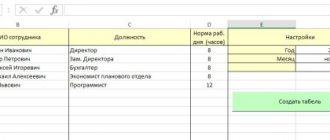1. Cabin: — tightness; — presence of floor mats; - condition of the upholstery. 2. Seat: — condition of the upholstery; - condition of the packing; — state of the adjusting mechanism. 3. Cabin glazing: — condition of the front glass; — condition of the rear window; — condition of the side windows; — condition of the windshield wipers; — condition of the window regulators. 4. Availability and condition of rear view mirrors. 5. Ventilation system. 6. Heating system. 7. Air of the working area. 8. Vibration levels: - general in the workplace; — local on the controls. 9. Noise levels: - external; - internal. 10. Infrasound levels in the cabin. 11. Toxicity of engine exhaust gases.
SANITARY AND HYGIENIC PASSPORT ON WOMEN'S WORKING CONDITIONS
Sanitary passport of a woman's workplace
The female half of the population nowadays is active in various fields. They work in hazardous industries and heavy industry just like men. But due to the exclusive right of any woman to become a mother, enterprises were legally required to develop a sanitary passport for a woman’s workplace. The document is aimed at protecting the fair sex from the harmful effects of production factors.
When distributing and arranging work for women in any organization, it is necessary to focus on SanPin standards. In accordance with these rules, regular workplaces must comply with the requirements of supervisory authorities and have a sanitary and hygienic passport, which indicates the features of the labor process.
Why is it so important to draw up a sanitary passport for the workplace?
Back in 1996, the State Committee for Sanitary and Epidemiological Supervision of the Russian Federation outlined in a separate chapter the standards for the provision of equipment and maintenance of workplaces for women. To document the safety of personnel, hygiene passports for women are compiled.
It is important to understand that workplace morbidity among women in Russia has long been a critical problem for the state. A sanitary passport for a woman’s workplace should be developed exclusively by a specialist in order to assess all possible harmful factors, make a conclusion, give recommendations for correcting the situation and again check compliance with safety conditions. SanPin establishes the following standards:
- the volume level of harmful substances must be harmless to the body;
- the raw materials used, hand tools, office supplies, equipment used by female employees should be selected according to the anatomical and physiological aspects of the personnel;
- when forming a staff and determining the number of personnel in certain types of production, it is important to remember that in particularly difficult and/or dangerous areas it is not allowed to use female labor unless strictly necessary;
- for women, working conditions are applied at enterprises of any type in accordance with their state of health and physical capabilities;
- for female employees, from the day they submit a pregnancy certificate, special conditions must be applied, including additional medical examination and transfer as soon as possible to a workplace that is in no way related to contact with harmful factors;
- Pregnant women are prohibited from working in unlit, poorly ventilated areas;
- for women during pregnancy and lactation, work related to computers, electronic terminals, and video display equipment is not offered in order to avoid exposure to electromagnetic radiation;
- special workplace conditions are created for pregnant women with the opportunity to fully perform work duties in a position convenient for the employee and change position at will;
- It is not allowed for women to work in a position fixed for a long time (standing, sitting, constantly moving);
The law regulates not only the labor regime, the availability of hygiene passports for women’s working conditions and workplace conditions, but even the provision of additional benefits for convenience. So, GOST specifies the requirements for the stool of a pregnant employee of an enterprise. Such a chair should be swivel, stable, adjustable for the height of the backrest and legs, have armrests, a spacious seat, and a special bolster to support the lumbar region. The material used is soft, non-slip and easy to clean and disinfect.
Special assessment of working conditions (page 16)
3. Arrange information and controls on the main equipment
4. Install security features
5. Install organizational equipment
6. Place technological equipment, working documentation, reference and special literature
7. Install local lighting, communications, alarm systems
8. Place household supplies.
9. Place aesthetic items for the industrial interior.
Typical workplace design
Typical
workplace design
– an organizational document that contains typical, i.e., typical for many workplaces of a certain specialty, solutions and recommendations for equipment and layout.
The basis for choosing an object for the organizational design of workplaces are: for workers - the lists of professions of the Unified Tariff and Qualification Directory in relation to different types of production, the nature of the work performed, equipment models and types of products; for employees - the nomenclature of employee positions and the qualification directory of employee positions.
It is advisable to develop standard projects for mass positions and professions of workers and employees, i.e. for jobs that exist in different organizations, including civil service organizations, and in large quantities, as well as for those jobs, the number of which not so great, but which are of great importance for the quality of the work performed.
The passport of the workplace
of workers and employees includes the following sections
: purpose and general characteristics; workplace layout; furniture, equipment and technical means; functional responsibilities (main elements of work); labor methods and techniques; working conditions; salary; service organization; regulatory documentation; workload (rationing); occupational health and safety.
The initial data for developing job passports are:
standard workplace passports; employee workplace models; staffing table of the enterprise; wage regulations; technical equipment installation diagram; Operating Instructions; management labor standards; safety instructions; working design of the building (office); specification for furniture and equipment; regulations on divisions; job descriptions; employee employment contracts; standards of space per 1 employee.
The methodology for developing a workplace passport includes the following steps:
1. Analysis of literature, typical workplace designs, visits to leading offices.
2. Calculation of the need for space, equipment, technical means, development of technical specifications for standard workplaces for departments.
3. Development of a technical project, ordering furniture and equipment, repairing premises, installing furniture, developing regulatory documents.
4. Introduction of a workplace passport.
WORKPLACE PASSPORT
Introduction
Workplace passport - a tool for organizing work
For the effective operation of a modern company, which uses modern technologies and a quality management system and has developed internal corporate communications, a clear organization of the labor process at each workplace is necessary. For these purposes, the personnel service, together with the labor protection department and management, can issue workplace passports. And in order to assess whether sanitary and hygienic factors comply with existing standards, it is worth inviting representatives of a specialized organization.
Get full text
Tutors
Unified State Exam
Diploma
An important role in organizing the work of workers is given to the rationalization of workplaces and the creation of comfortable, and most importantly, safe conditions. Article 209 of the Labor Code of the Russian Federation defines a workplace as a place where an employee must be or where he needs to arrive in connection with his work and which is directly or indirectly under the control of the employer. According to the same article, working conditions are a set of factors in the working environment and the labor process that affect the performance and health of the employee. Certification of workplaces, in accordance with labor legislation, involves assessing working conditions at workplaces. During such an inspection, harmful and (or) dangerous production factors are identified, and based on its results, measures are planned to bring working conditions into compliance with state regulatory requirements. Do not forget that the responsibility for ensuring labor safety rests with the employer.
Any workplace must best serve its purpose and ensure that primary and secondary duties are performed with the least amount of effort per labor expended. To do this you need:
— improve the organization of workplaces (convenient layout, lighting, technical and technological equipment);
— improve service (provision of stationery, furniture, raw materials, materials and tools);
— reduce the harmful effects of factors affecting the health of employees (noise, vibration, microclimate, radiation);
— strengthen labor and performance discipline, as well as employees’ loyalty to the company (compliance with the daily routine, requirements for the operation of equipment);
— improvement of working and rest conditions on site (regulated breaks in work, psychological relief, sanitary and hygienic standards, compliance with labor protection and safety regulations);
— optimize the use of working time (maintaining labor discipline, rationing work, eliminating interference during work).
To develop a workplace passport, the HR officer must first carry out the following activities:
1) study special literature, regulatory reference information (GOSTs, Sanitary Regulations, classification directory of positions);
2) prepare internal local documents (internal labor regulations, regulations on labor protection, regulations on departments, job descriptions, etc.);
3) conduct a comprehensive analysis of the existing workplace in accordance with regulatory documentation.
Workplace passport
— an internal regulatory document that specifies the relevant sanitary and hygienic standards, harmful production factors and safety rules.
Section 1. Purpose of the workplace
A workplace is a part of the production area assigned to an employee or group of employees, equipped with the necessary equipment to effectively perform work in accordance with job responsibilities. This section defines the purpose of this workplace and what characteristics it has.
Section 2. Work plan
This section presents an individual employee work plan for a certain period, indicating specific tasks that he must complete during a given time. Guided by this plan, the employee can organize his activities in advance.
Section 3. Functional and organizational structure
The functional-organizational structure of management is the composition (specialization), interrelation and subordination of independent management units and individual positions performing management functions. Allows the employee to quickly become familiar with any changes in the organizational and staffing structure of the company.
Section 4. Regulatory documents
This section presents the following local regulatory documents necessary for organizing the workplace:
— regulations on remuneration and bonuses;
— regulations on labor protection;
— regulations on the division;
- job description.
Regulatory documents must provide the necessary and sufficient minimum information to each employee using a workplace passport. They contain information about the list, sequence and standards of work performed, duties, degree of responsibility and rights of the employee, production relations, organization of work and its mandatory techniques.
Section 5. Organizational and administrative documents
The documents contained in this section (orders, procedures) detail the work process at each workplace as much as possible. Employees can familiarize themselves with them in a timely manner.
Section 6. Spatial arrangement of the workplace
This section specifies the layout of office premises and the location of the workplace in space. Workplaces must be organized in strict accordance with the workflow and documentation flows. It is useful to pay attention to the following practical recommendations:
Get full text
— Structural units and employees who often come into contact with each other in their work activities should be located close to each other.
— Cabinets, shelving and other equipment must be located in such a way as to provide access to them.
— Items that are used more often during work should be located, if possible, at the level of the working area.
— The area of individual workplaces must comply with sanitary standards and the specifics of professional activity.
— Workplaces of company employees who receive a large number of visitors should be located close to the entrance to the office premises.
Saving employee time and effort is an important criterion when organizing workplaces in a company.
Section 7. Workplace equipment
Workplace equipment is a set of equipment, tools, technical and technological documentation, and labor protection equipment located within it. Checking equipment allows you to identify areas where labor automation is low or where work is completely done manually.
Section 8. Working conditions in the workplace
In this section, working conditions in the workplace are assessed on the basis of a comparative analysis of sanitary, hygienic and psychophysiological factors.
Indicators should be selected during a preliminary study and reflect those factors that most significantly influence the formation of working conditions. Their impact on the health and performance of the employee is taken into account.
To measure the parameters of dangerous and harmful production factors, determine indicators of the severity and intensity of the labor process, you can involve an organization authorized to engage in such activities (for example, contact the center of state epidemiological surveillance).
| Due to the large volume, this material is placed on several pages: 16 |
Tablet with 1C support
A tablet is not the most necessary work tool for accounting. But in some cases, an employee on a business trip absolutely needs to have access to the 1C infrastructure.
The problem is that there are no official full-fledged mobile versions of 1C Accounting; the package only works with desktop operating systems. Therefore, you need a tablet with real Windows.
Acer Aspire Switch 10 V runs on full Windows 10, and therefore is fully compatible with any 1C and Microsoft Office products. The device has a 10.1-inch high-resolution touchscreen, 64 GB of memory and even an attached keyboard that turns the tablet into a laptop. With such a device, you can organize a full-fledged workplace for an accountant even on a train or in a shopping center with Wi-Fi.
Acer Aspire Switch 10 V 64Gb tablet: 21,000 rubles.
Setting up a workplace for an accountant
Probably, only the management has an accurate idea of \u200b\u200bthe responsibility and the actual volume of documentation with which an accountant has to work. To store some documents, metal cabinets and racks are enough; to organize others, a filing cabinet is required; others should be stored in a safe place under lock and key... The interior of the room must be thought out in such a way as to ensure the storage of all documents and prompt access to them. And at the same time, leave enough space for the accountant himself so that he does not get squeezed. This difficult task is actually quite solvable, the main thing is a competent and thorough approach!
Since the modern office worker has to work with many documents at the same time, he needs a really large desk. An ergonomic curved angular shape of the tabletop is preferable - almost its entire area is used due to the fact that it is within the reach of the hands. To increase the working area, you can use a side rolling cabinet, in which you can also store work papers and office supplies.
The best choice for a desktop computer is the so-called monoblock, in which the system unit is located in the monitor, so it takes up minimal space and looks aesthetically pleasing. The keyboard and mouse should be used optical, wireless - this will free the desk from unnecessary wires.
We've sorted out the table, now it's time for paper documents, of which there are a ton in the accountant's office. You can install metal shelving behind your desk - then you can reach the folder you need without getting up from your chair.
Work documents and papers that are used less frequently can be stored in a spacious filing cabinet. An excellent solution in conditions of limited space would be cabinets of the so-called tambour type - with sliding doors that under no circumstances interfere with adjacent furniture. If the doors of at least one of the cabinet sections are glass, then the accountant will appreciate the clarity - the contents will always be in sight.
The quality of workmanship and capacity will be the main criteria when choosing an accounting cabinet - estimate whether it will include the number of filing folders you need. The color design of accounting cabinets is standard, light gray.
Strict reporting forms, work books, company charter documents, contracts with key contractors, organization seals, money for business needs - all this must be stored in a place much more reliable than a closet or desk drawer. For these purposes, it is better to buy an office safe - quite reliable, spacious and functional. For greater security, it is recommended that safes be anchored to the wall or floor.
When choosing a safe, you should pay attention to its class, capacity and lock type. With class, everything is simple - the higher the class, the more reliable the safe. With capacity, everything is also more or less clear. But the type of lock determines the features of operation, the most convenient are classic key and combination electronic locks. The latter are more expensive, but eliminate the need to constantly carry keys with you. However, if you have memory problems, it is better to refrain from purchasing a safe with a combination lock.
As we can see, the initially seemingly difficult task of arranging an accounting department has a very feasible solution. Every smart manager understands that the layout of the office should ensure not only functionality, but also the comfort of employees - labor productivity, and, as a consequence, the success of the company largely depends on this.
electronic edition of 100 ACCOUNTING QUESTIONS AND ANSWERS BY EXPERTS
A useful publication with questions from your colleagues and detailed answers from our experts. Don't make other people's mistakes in your work! 6 issues of the publication are available to subscribers for free.
Get the edition











